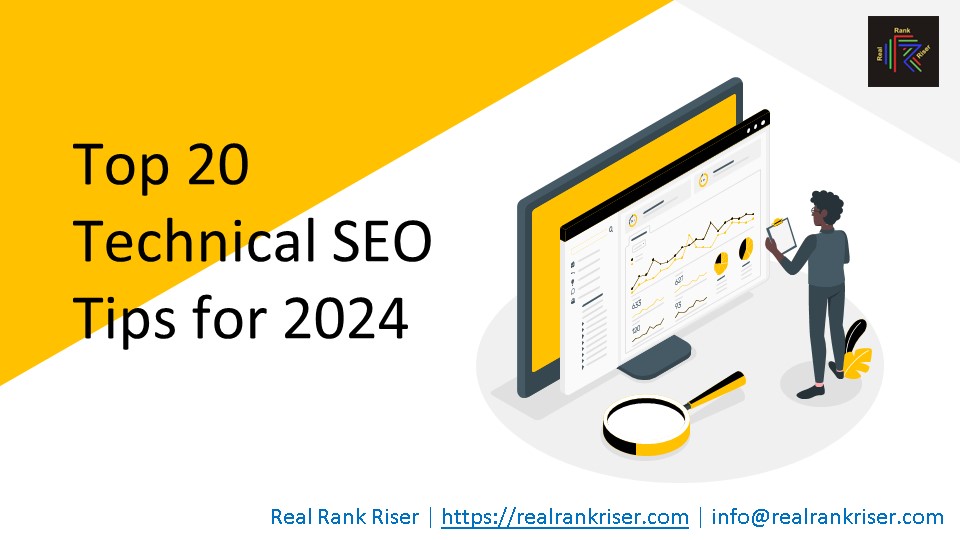Struggling with Search Engine Optimization? Our latest guide equips you with the 20 essential technical SEO tips you need to build a search-engine-friendly website and attract organic traffic in 2024!
Here’s what you’ll learn:
- Conquer mobile-first indexing and Core Web Vitals.
- Secure your website with HTTPS encryption.
- Leverage structured data markup for richer search results.
- Optimize images for faster loading times.
- Explore emerging trends like voice search optimization and AI-powered SEO tools.
- Gist of this entire Article is provided in following Video. But we Recommend to go through article for detailed understanding.
Technical SEO Tip -1 : Mobile-First Indexing & Responsive Design

Forget the desktop-first days! Google’s mobile-first indexing prioritizes websites that deliver a fantastic experience on smartphones and tablets. This means if your website isn’t mobile-friendly, you could be missing out on crucial search engine visibility.
The solution? Responsive design. This approach ensures your website automatically adjusts its layout for optimal viewing on any device, from desktops to tablets to mobiles. Imagine a website that resizes images, shifts menus, and optimizes content for smaller screens – that’s the magic of responsive design.
But how do you know if your website is mobile-friendly? Fear not! Several free tools can help you assess your mobile readiness. Test your website using Google Search Console’s Mobile-Friendly Test, Bing’s Mobile Friendliness Test Tool, or options like SmallSEOTools Mobile-Friendly Test and TechnicalSEO Mobile-Friendly Test.
By prioritizing mobile-first indexing and implementing responsive design, you’ll create a website that not only pleases Google but also provides a seamless user experience for all your visitors, regardless of the device they use. This translates to better engagement, higher conversion rates, and ultimately, a stronger online presence.
Technical SEO Tip-2 : Prioritize Core Web Vitals
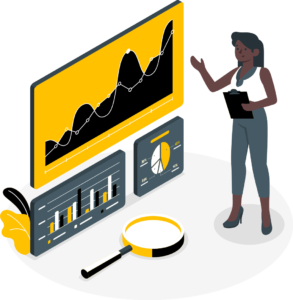
Forget clunky websites that take forever to load! Core Web Vitals are a set of metrics developed by Google that measure a website’s speed, responsiveness, and visual stability – all crucial factors for user experience and search engine ranking.
Think of Core Web Vitals as your website’s report card on these three key aspects:
- Largest Contentful Paint (LCP): This measures how quickly the main content (text, images) loads on your website. Aim for an LCP under 2.5 seconds for a smooth user experience.
- First Input Delay (FID): This metric assesses how responsive your website feels – basically, how long it takes for the website to react to a user’s interaction (like clicking a button). A lower FID (ideally under 100 milliseconds) ensures a more responsive and frustration-free experience.
- Cumulative Layout Shift (CLS): Nobody likes a website that jumps around as it loads! CLS measures visual stability, ensuring elements on your website load predictably and don’t unexpectedly shift, potentially confusing users.
But how do you measure these Core Web Vitals? Thankfully, there are free tools at your disposal! Explore PageSpeed Insights and Lighthouse for in-depth website audits, or use the Web Vitals Chrome extension for real-time Core Web Vitals monitoring. Additionally, Google Search Console’s Core Web Vitals report provides valuable data on your website’s performance across these metrics.
By prioritizing Core Web Vitals and optimizing your website’s performance, you’ll create a user-friendly experience that keeps visitors engaged and ultimately boosts your website’s ranking in search results.
Technical SEO Tip-3 : Implement HTTPS Encryption
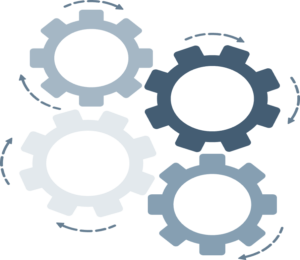
Security in today’s digital world is paramount, and your website shouldn’t be an exception! HTTPS encryption adds a layer of security to your website, protecting user data like login information and credit card details during transmission. This not only builds trust with your visitors but is also crucial for search engine ranking.
Here’s why HTTPS matters:
- Google prioritizes secure websites: Google actively promotes secure browsing and may penalize websites that lack HTTPS encryption. This means your website might appear lower in search results compared to secure competitors.
- Builds user trust: A website secured with HTTPS displays a padlock icon in the address bar, signifying a safe browsing environment. This reassures users that their information is protected, encouraging them to explore your website with confidence.
- Protects sensitive data: With HTTPS, data transmitted between your website and a visitor’s browser is encrypted, making it virtually impossible for hackers to intercept it.
Thankfully, implementing HTTPS is easier than ever. Many web hosting providers now offer free SSL certificates, which are essential for enabling HTTPS encryption. By prioritizing website security and user trust, you not only enhance user experience but also improve your website’s search engine ranking potential.
Technical SEO Tip-4 : Optimize Website Speed
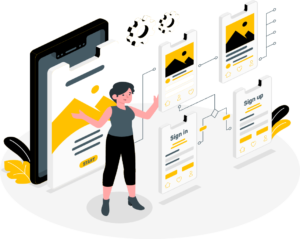
In today’s fast-paced world, patience is a rare commodity. When it comes to websites, users expect lightning-fast loading speeds. This is where website speed optimization comes in – it’s the difference between a visitor who stays engaged and one who clicks away in frustration. Here’s why website speed matters:
- Boosts user experience: Nobody enjoys waiting for a website to load. A slow website translates to lost visitors, decreased engagement, and ultimately, lost conversions. By optimizing your website speed, you ensure a smooth and enjoyable user experience, keeping visitors happy and coming back for more.
- Enhances SEO performance: Google prioritizes websites that deliver a fast and mobile-friendly experience. Slow loading times can negatively impact your search engine ranking, pushing your website down the results page and making it harder for potential customers to find you.
- Improves conversion rates: Studies show that faster loading times directly correlate with higher conversion rates. When your website loads quickly, visitors are more likely to complete desired actions, whether it’s making a purchase, subscribing to your newsletter, or contacting you.
Thankfully, there are a variety of free tools to help you analyze and optimize your website speed. Tools like Google PageSpeed Insights, GTmetrix, Pingdom Website Speed Test, and Site24x7 Website Speed Monitoring offer valuable insights on areas for improvement, such as image optimization, caching, and minification. By prioritizing website speed and utilizing these resources, you can create a fast-loading website that not only provides a fantastic user experience but also excels in search engine results.
Technical SEO Tip-5 : Utilize a Clear and Descriptive Sitemap

Imagine a search engine crawler trying to navigate your website – a sitemap can be its guiding light! A sitemap acts as a comprehensive roadmap of your website’s content, providing search engines with valuable information about all your pages and their structure. This helps search engines discover and index your website’s content efficiently, potentially boosting your organic visibility.
Here’s how a clear and descriptive sitemap benefits your SEO efforts:
- Improved crawling and indexing: By submitting a sitemap, you guide search engines to all the important pages on your website, ensuring they don’t miss any hidden gems. This improves the likelihood of your website’s content appearing in search results.
- Enhanced understanding of website structure: A well-structured sitemap communicates the hierarchy of your website’s content to search engines. Think of it like a table of contents – it tells search engines which pages are most important and how they’re connected.
- Prioritization of key content: With a sitemap, you can highlight specific pages you want search engines to prioritize, such as new blog posts or landing pages. This helps ensure your most valuable content gets noticed.
Creating a sitemap is a breeze! Several free and paid tools are available to simplify the process. Options like Screaming Frog, Rank Math, Yoast SEO’s XML Sitemaps Generator, and SEOptimizer can help you generate clear and descriptive sitemaps tailored to your website’s unique needs. By utilizing a sitemap, you provide a helping hand to search engines, ultimately improving your website’s discoverability and search engine ranking potential.
Technical SEO Tip-6 : Address Crawl Errors and Broken Links

Frustrated visitors and confused search engines – that’s the unfortunate consequence of broken links and crawl errors on your website. Here’s why addressing these issues is crucial for SEO and user experience:
- Improved User Experience: Broken links lead to dead ends, leaving users frustrated and unable to find the information they seek. Fixing broken links ensures a smooth browsing experience, encouraging users to stay engaged and explore your website further.
- Enhanced Search Engine Indexing: Search engines rely on successfully crawling your website’s content to index it effectively. Crawl errors prevent search engines from accessing important pages, potentially hindering your website’s visibility in search results.
- Boosted SEO Performance: Broken links and crawl errors can negatively impact your website’s SEO ranking. By addressing these issues, you demonstrate a well-maintained website to search engines, potentially improving your ranking potential.
Thankfully, identifying and fixing these issues is easier than ever. Tools like Screaming Frog, Google Search Console’s Crawl Errors report, Semrush Site Audit, and Ahrefs Broken Link Checker can help you pinpoint broken links and crawl errors across your website. Once identified, you can either fix the broken links by redirecting them to the correct pages or remove them entirely. Similarly, you can address crawl errors by adjusting website settings or contacting your web hosting provider if technical issues are involved. By dedicating time to tackle broken links and crawl errors, you’ll create a user-friendly and search engine-friendly website, ultimately boosting your online presence.
Technical SEO Tip-7 : Optimize Image File Sizes
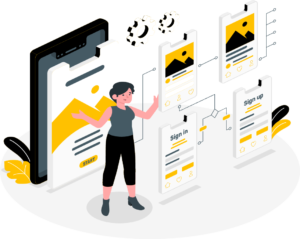
In today’s visually driven world, images are a powerful tool for engaging website visitors. However, large, unoptimized image files can have a detrimental effect – they can significantly slow down your website’s loading speed. Here’s why image optimization is crucial for user experience and SEO:
- Enhanced Website Speed: Large image files take longer to load, leading to a sluggish website experience. By optimizing image file sizes, you ensure your website loads quickly, keeping visitors engaged and reducing bounce rates (the percentage of visitors who leave after just one page view).
- Improved User Experience: Nobody enjoys waiting for images to load. A fast-loading website translates to a smoother and more enjoyable user experience, encouraging visitors to explore further and potentially convert into leads or customers.
- Boosted SEO Performance: Google prioritizes websites that deliver a fast and mobile-friendly experience. Slow loading times due to large image files can negatively impact your search engine ranking. By optimizing image sizes, you contribute to a faster website, potentially improving your search engine visibility.
Thankfully, there’s a solution! Several free and paid tools can help you optimize image file sizes without sacrificing quality. Tools like TinyPNG, ImageOptimizer.io, Optimizilla, Compress Now, JPEG Optimizer, and Ezgif are just a few options at your disposal. By incorporating image optimization into your website management routine, you’ll create a visually appealing website that loads quickly, ultimately enhancing both user experience and SEO performance.
Technical SEO Tip-8 : Implement Lazy Loading for Images
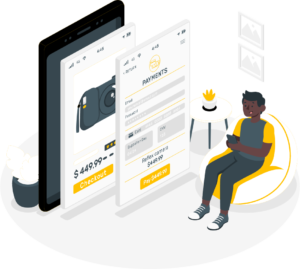
In the race for website speed, every millisecond counts. Enter lazy loading – a technique that prioritizes a user’s experience by delaying the loading of images and other non-essential content below the fold (the area of the screen initially visible without scrolling). Here’s why lazy loading is a game-changer for user experience and SEO:
- Perceived Speed Boost: By prioritizing the loading of content users see first, lazy loading creates the impression of a faster website. This translates to a more satisfying user experience, keeping visitors engaged and encouraging them to explore further.
- Reduced Initial Load Time: Lazy loading prevents the browser from downloading all images simultaneously, which can significantly slow down initial page load time. This is particularly beneficial for users on slower internet connections.
- Improved Conversion Rates: Faster loading times lead to higher user engagement and potentially improved conversion rates. With lazy loading, visitors are more likely to stay on your website and complete desired actions, whether it’s making a purchase, subscribing to a newsletter, or contacting you.
Implementing lazy loading is easier than you might think! Several free and premium WordPress plugins are available to simplify the process. Options like a3 Lazy Load, Smush, Optimole, WP Rocket Lazy Load, and many more can streamline image optimization and lazy loading, ensuring your website prioritizes the content users see first. By embracing lazy loading, you can create a website that loads quickly, feels responsive, and ultimately delivers a fantastic user experience that boosts conversions and SEO performance.
Technical SEO Tip-9 : Leverage Browser Caching

Ever revisit a website and notice it loads significantly faster? That’s the magic of browser caching! This technique allows users’ browsers to store static website resources (like images, CSS, and JavaScript files) locally on their devices. The next time they visit your website, these files can be loaded from their local cache rather than downloading them all over again. Here’s how browser caching benefits both user experience and SEO:
- Improved User Experience for Returning Visitors: By leveraging browser caching, repeat visitors experience significantly faster loading times as their browsers don’t need to download the same resources repeatedly. This translates to a smoother and more enjoyable user experience, encouraging them to return again and again.
- Reduced Server Load: With cached resources served from the user’s device, the load on your website’s server is lessened. This translates to better website performance, especially during peak traffic times.
- Potential SEO Boost: Faster loading times are a crucial factor for SEO ranking. By leveraging browser caching and ensuring a speedy website experience, you might see a positive impact on your website’s position in search results.
Several free tools can help you assess and optimize your website’s browser caching. Tools like GTmetrix, Pingdom Website Speed Test, Google PageSpeed Insights, and YSlow can analyze your website and offer recommendations for setting appropriate cache headers and leveraging browser caching effectively. By implementing browser caching, you create a win-win situation – a faster website for returning visitors and potentially improved SEO performance for your website.
Technical SEO Tip-10 : Manage Robots.txt File
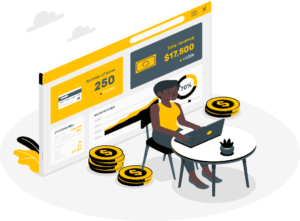
Imagine your website as a library, and the robots.txt file is the librarian’s guide. This critical file instructs search engine crawlers on which pages to explore and index for search results. While it might seem technical, managing your robots.txt file effectively can benefit your SEO efforts:
- Control Search Engine Crawling: You can use the robots.txt file to prevent search engines from crawling and indexing specific pages, such as login pages, duplicate content, or internal search results. This helps search engines focus on the valuable content you want them to find and index.
- Prevent Accidental Blocking: The robots.txt file can accidentally block important pages if not managed properly. This can negatively impact your website’s search engine visibility. By carefully managing your robots.txt file, you ensure important pages are accessible to search engine crawlers.
- Optimize Crawling Efficiency: Search engines have limited crawl budget, meaning the number of pages they crawl and index on your website is finite. Using the robots.txt file strategically can guide them towards the most important pages, optimizing their crawling efficiency.
Thankfully, managing your robots.txt file doesn’t require advanced coding skills. Many popular WordPress SEO plugins, like Yoast SEO and Rank Math, offer user-friendly interfaces to manage your robots.txt file effortlessly. Additionally, Google Search Central provides extensive documentation to help you understand and manage your robots.txt file effectively. By taking control of your robots.txt file, you can guide search engine crawlers and ensure your website’s most valuable content gets the search engine visibility it deserves.
Technical SEO Tip-11 : Utilize Structured Data Markup
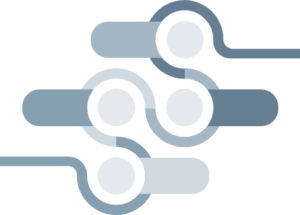
Want your website to stand out in search results? Structured data markup can be your secret weapon! Imagine adding context and details to your website content that search engines can understand – that’s what structured data markup does. By using specific code snippets, you provide search engines with valuable information about your content, like product details for an e-commerce website, event information for a local business, or even recipes with cooking times and ingredients. Here’s how structured data markup can benefit your SEO:
- Richer Search Results: Search engines can leverage structured data to create richer search results for your website. This might include star ratings for reviews, product prices, event dates, or even recipe cooking times displayed directly in search results.
- Improved Click-Through Rates: Richer search results with additional information can be more enticing to users, potentially leading to higher click-through rates (the number of users who click on your website from search results). This translates to increased website traffic and potential conversions.
- Enhanced SEO Performance: While not a direct ranking factor, structured data can indirectly improve your SEO by increasing click-through rates and user engagement. Additionally, Google values well-structured information and may favor websites that utilize structured data markup effectively.
Implementing structured data markup might sound complex, but it doesn’t have to be. Several resources are available to help you get started. Tools like Google’s Schema Markup Testing Tool and Schema.org offer comprehensive guides and tools to create the appropriate code snippets for your content type. By incorporating structured data markup, you can provide search engines with a deeper understanding of your website’s content, potentially leading to richer search results and improved click-through rates.
Technical SEO Tip-12 : Optimize Internal Linking Structure
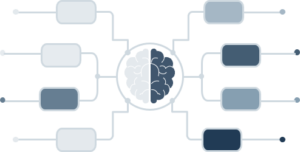
Imagine a website as a maze – a well-structured internal linking system acts as the roadmap, guiding search engines and users through your valuable content. Internal links connect different pages on your website, helping search engines understand the hierarchy and relationships between your content. Here’s how optimizing your internal linking structure benefits your SEO:
- Improved Website Navigation: Clear and relevant internal linking helps users navigate your website more efficiently, allowing them to discover related content and explore deeper. This keeps users engaged and potentially increases the time they spend on your website.
- Enhanced Search Engine Crawling: Internal links act as breadcrumbs for search engine crawlers, guiding them to discover and index all your website’s pages. This ensures important content isn’t missed and has the potential to be ranked in search results.
- Boosted SEO Performance: By strategically linking to relevant high-quality pages on your website, you distribute “link juice” (SEO value) throughout your content. This can potentially improve the ranking of your target pages in search results.
Several tools can help you analyze and optimize your internal linking structure. Tools like Ahrefs, Semrush, and popular WordPress SEO plugins like Rank Math and Yoast SEO offer features that visualize your website’s internal linking network and identify opportunities for improvement. Additionally, Google Search Console can highlight orphaned pages (pages with no internal links) that might benefit from strategic linking. By optimizing your internal linking structure, you create a user-friendly and search engine-friendly website, ultimately improving website navigation, content discoverability, and SEO performance.
Technical SEO Tip-13 : Implement AMP (Accelerated Mobile Pages)

In today’s mobile-first world, website speed is crucial, especially for mobile users. Accelerated Mobile Pages (AMP) can be a game-changer! AMP is an open-source framework developed by Google that creates stripped-down versions of your web pages specifically optimized for faster loading on mobile devices. Think of it as a lightweight version of your website, prioritizing essential content and functionality for a smooth mobile experience. Here’s how implementing AMP can benefit your website:
- Enhanced Mobile Experience: AMP pages load significantly faster on mobile devices, leading to a smoother and more enjoyable user experience for your mobile visitors. This keeps them engaged and less likely to abandon your website due to slow loading times.
- Potential SEO Boost: While not a direct ranking factor, Google prioritizes mobile-friendly websites. AMP’s focus on mobile speed can indirectly improve your SEO by enhancing user experience and potentially increasing mobile traffic and engagement.
- Increased Visibility: AMP pages can sometimes appear in a special AMP carousel within mobile search results, potentially leading to increased visibility for your website.
For detailed information and step-by-step implementation guides, explore the AMP Project website. While implementing AMP might require some technical expertise, the benefits for mobile user experience and potential SEO gains can be significant. Consider collaborating with a developer or exploring AMP plugins for your website management system to streamline the process.
Technical SEO Tip-14 : Disavow Spammy Backlinks

Not all links are created equal! While backlinks (links from other websites to yours) are generally valuable for SEO, spammy backlinks from low-quality websites can actually hurt your website’s ranking. These backlinks can be a sign of manipulative SEO tactics and might trigger Google penalties. Here’s why disavowing spammy backlinks is crucial for SEO:
- Maintain Website Authority: Google considers the quality and relevance of websites linking to yours. Backlinks from low-quality websites dilute your website’s authority and can negatively impact your SEO performance. Disavowing these backlinks tells Google you don’t endorse them.
- Protect Against Penalties: In extreme cases, a surge of spammy backlinks can lead to Google penalties, potentially burying your website in search results. Disavowing these links demonstrates a proactive approach to maintaining a clean backlink profile.
- Improved SEO Potential: By disavowing spammy backlinks, you focus Google’s attention on high-quality backlinks that genuinely reflect your website’s value. This can potentially improve your website’s ranking potential in search results.
Disavowing backlinks requires careful consideration. While Google Search Console offers a Disavow Tool, it’s recommended to proceed with caution. Several SEO tools like Moz, Semrush, and Ahrefs can help you identify potential spammy backlinks. Once identified, you can attempt to remove them by contacting the webmaster of the linking website. If removal is not possible, disavowing them through Google Search Console becomes the next step. Remember, disavowing backlinks is an advanced SEO tactic – consult an SEO specialist if you’re unsure about the process. By keeping your backlink profile clean and free of spam, you demonstrate website quality to search engines and potentially improve your SEO performance in the long run.
Technical SEO Tip-15 : Enable Internationalization (i18n) and Localization (l10n) Settings

Does your website dream of reaching audiences across the globe? Consider implementing internationalization (i18n) and localization (l10n) settings! These powerful tools allow you to adapt your website’s content and functionality for different languages and regional preferences.
Here’s how i18n and l10n can unlock global SEO potential:
- Expand Your Reach: By offering your website content in multiple languages, you tap into a wider audience, potentially increasing website traffic and brand awareness.
- Enhanced User Experience: Imagine a website that speaks your language – that’s the magic of l10n. By adapting content to local preferences, including currency, date formats, and cultural references, you create a more engaging and user-friendly experience for international visitors.
- Improved SEO for Global Markets: Search engines prioritize content relevant to a user’s location and language. Utilizing i18n and l10n demonstrates your commitment to international audiences. This can potentially improve your website’s ranking in search results for specific languages and regions.
Implementing i18n and l10n can involve website development considerations. However, the potential rewards for reaching a global audience and boosting your website’s SEO performance in international markets can be significant. Explore various options, such as multilingual plugins for your website management system or collaborating with a developer experienced in internationalization best practices. By embracing i18n and l10n, you can transform your website into a global destination that attracts visitors from all corners of the world.
Technical SEO Tip-16 : Regularly Update and Maintain Your Website
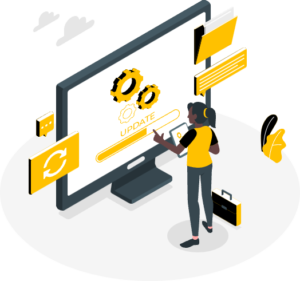
Your website is a dynamic entity, not a static brochure. Just like your wardrobe needs refreshing, so does your website! Regular website updates and maintenance are crucial for maintaining a fresh, secure, and search engine-friendly online presence. Here’s why ongoing website maintenance is essential:
- Improved User Experience: Outdated content, broken links, and sluggish performance frustrate visitors. Regular updates ensure your website offers accurate information, well-functioning features, and a smooth user experience, keeping visitors engaged and coming back for more.
- Enhanced Security: Cyber threats are constantly evolving. Regular updates for plugins, themes, and your website’s core software patch security vulnerabilities, protecting your website and user data from potential attacks.
- Boosted SEO Performance: Search engines favor websites that are fresh, secure, and mobile-friendly. Regular maintenance ensures your website adheres to these criteria, potentially improving your search engine ranking and online visibility.
Thankfully, maintaining your website doesn’t have to be a chore. Many Content Management Systems (CMS) like WordPress offer automatic updates for plugins and themes. Additionally, various security plugins like All in One Security, Weborion, Sucuri, and vulnerability scanners like Acunetix can help you identify and address security issues proactively. By dedicating time to regular website updates and maintenance, you create a secure, user-friendly website that thrives in search results and delivers a fantastic experience for your visitors.
Technical SEO Tip-17 : Leverage a Content Delivery Network (CDN)

Imagine your website content being served from servers around the globe! That’s the power of a Content Delivery Network (CDN). A CDN stores static website content (like images, videos, JavaScript files) on geographically distributed servers, significantly reducing loading times for users in different locations. Think of it like having local copies of your website content closer to your visitors, ensuring faster delivery. Here’s how leveraging a CDN benefits your website:
- Improved Website Speed: By serving content from servers closer to users, CDNs can dramatically decrease website loading times, especially for visitors in distant locations. This translates to a smoother and more enjoyable user experience.
- Enhanced Global Reach: A CDN removes location barriers, making your website content readily available to users worldwide. This can potentially increase website traffic and brand awareness.
- Boosted SEO Performance: Search engines prioritize websites that deliver a fast and mobile-friendly experience. Faster loading times facilitated by a CDN can positively impact your website’s ranking in search results.
Several prominent CDN providers offer a variety of plans and features. Popular options include Cloudflare, Amazon CloudFront (part of Amazon AWS), Google Cloud CDN, Stackpath, Microsoft Azure CDN, and CDN77. Choosing the right CDN depends on your website’s specific needs and budget. Implementing a CDN can be a technical process, but many hosting providers offer CDN integration options. Additionally, some website management systems can integrate with popular CDNs seamlessly. By leveraging a CDN, you create a website that loads quickly for visitors worldwide, potentially boosting user experience, global reach, and overall SEO performance.
Technical SEO Tip-18 : Utilize Structured Data for Videos

Don’t let your website’s videos get lost in the search engine shuffle! Utilize structured data for videos, also known as video schema markup. Imagine adding context and details that search engines can understand specifically for your videos. By implementing video schema markup with code snippets, you provide search engines with valuable details like video title, description, thumbnail image, upload date, and even the video’s duration. Here’s how structured data for videos can benefit your website:
- Richer Video Search Results: Search engines can leverage video schema markup to create richer video search results for your content. This might include displaying video titles, descriptions, and thumbnails directly in search results, potentially grabbing user attention and increasing click-through rates.
- Enhanced Video Discoverability: With detailed information about your videos, search engines can better understand their content and context. This can improve the chances of your videos appearing in relevant search results, leading to increased organic discovery.
- Potential SEO Boost: Richer video search results and increased video discoverability can indirectly improve your website’s SEO performance. By attracting more viewers through compelling video snippets, you can potentially increase website traffic and engagement, which are positive SEO signals.
Implementing video schema markup is easier than it sounds! Resources like Schema.org and Google’s Schema Markup Testing Tool offer comprehensive guides and tools to help you create the appropriate code snippets for your videos. By incorporating structured data for videos, you give search engines a deeper understanding of your video content, potentially leading to richer search results, increased video discoverability, and a potential SEO boost for your website.
Technical SEO Tip-19 : AI-powered SEO Tools

The world of SEO is constantly evolving, and artificial intelligence (AI) is at the forefront of this change. AI-powered SEO tools are revolutionizing the way we optimize websites. These innovative tools go beyond basic keyword research, offering a comprehensive suite of features to streamline your technical SEO efforts. Here’s how AI can supercharge your SEO strategy:
- In-depth Website Audits: AI-powered tools can crawl your website and identify technical SEO issues like broken links, slow loading times, and mobile-friendliness problems. This allows you to address these issues efficiently, ensuring a search engine-friendly website foundation.
- Advanced Keyword Research: AI goes beyond simple search volume data. These tools analyze user intent, search trends, and competitor content to identify high-potential keywords that resonate with your target audience.
- Content Creation Assistance: Don’t underestimate AI’s writing prowess! AI-powered SEO tools can help you create content outlines, suggest relevant topics, and even generate drafts based on your target keywords and content strategy.
Several AI-powered SEO tools are available on the market, including SEO.ai, SurferSEO, Clearscope, and Marketmuse. Each offers unique features and functionalities. Exploring these tools and leveraging their AI capabilities can significantly improve your SEO workflow. By automating tasks, identifying optimization opportunities, and providing data-driven insights, AI can empower you to create high-quality content, address technical SEO issues, and ultimately achieve superior search engine ranking for your website.
Technical SEO Tip-20 : Voice Search Optimization

The way we search the web is changing! Gone are the days of typing out precise keywords. With the rise of voice search assistants like Siri and Alexa, users are increasingly asking questions in a natural, conversational way. Optimizing your website for voice search can be a game-changer for reaching this growing audience.
Here’s why voice search optimization deserves your attention:
- Target Long-Tail Keywords: Voice search queries tend to be longer and more phrased like questions. By incorporating long-tail keywords that reflect natural language into your content and meta descriptions, you increase the chances of your website appearing in voice search results.
- Focus on Conversational Language: When people speak, they don’t use formal keywords. Optimize your website content using natural language and answer potential questions your target audience might ask while conducting a voice search.
- Prioritize Local SEO: Voice search is often used for local queries like “best pizza near me”. Ensure your website’s local SEO is up-to-date, including accurate business NAP (Name, Address, Phone number) information and positive online reviews.
The good news? You don’t need fancy tools to get started with voice search optimization. Basic keyword research tools can help you identify long-tail keywords with a question format. By focusing on natural language and prioritizing local SEO, you can ensure your website is well-positioned to capture the growing wave of voice search traffic.
Concluding Remarks
By implementing these 20 technical SEO tactics, you’ll lay a strong foundation for search engine success. Remember, SEO is an ongoing process, but these tips equip you to optimize your website for crawlers, enhance user experience, and ultimately climb the search engine rankings ladder. Real Rank Riser can be your partner in navigating the ever-evolving world of SEO. Visit us at https://realrankriser.com/ or contact us at info@realrankriser.com to explore how we can help your website thrive online.
This complete article is encapsulated within a PowerPoint presentation available for download and utilization here.
Image Credits : Slidesgo, Flaticon,Freepik

